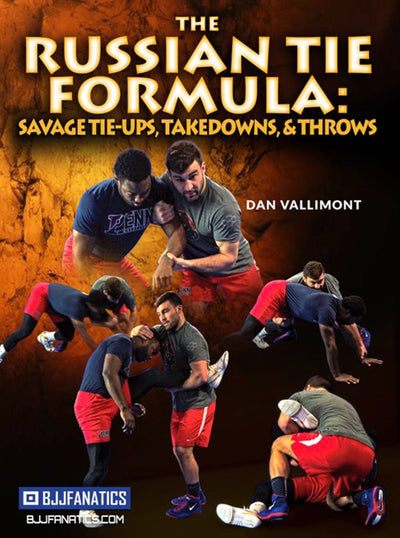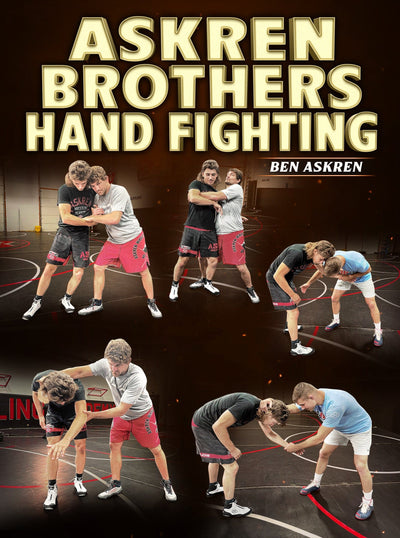The Collar Tie: Use It, Lose It, and Attack It
So guys, today we are going to do a little bit of investigating in one of the most basic, and utilized ties in all of grappling, the collar tie. Whether you love it, hate it, or could care less about it, it is very prevalent, and you will have to learn how to address it. Hopefully after reading this piece, and watching some of the attached videos from some very talented individuals, you’ll have a better sense of what to do when it is being used against you, or maybe even develop your own schemes.
The Collar Tie Basics
Usually, a collar tie is led with one hand, and the initiating wrestler’s free hand can look to attack at his or her discretion. The free hand can be used to attack the other wrestler’s hands, arms, upper torso/belly, or the legs in almost any style or variation.
The collar tie is one of the most diverse ties in wrestling, and used correctly, can be one of the most dangerous and extremely hard to cope with. Looking back through the hard-nosed years of USA Wrestling in the 80’s and 90’s you will see the collar tie used quite often, however the sport has evolved to take newer approaches to controlling a standing opponent. I personally believe that used correctly, the collar tie can still be just as useful today as it ever has been, but I do not coach it hardly ever, and I’ll tell you why.
Most wrestlers get in on a collar tie and it seems like they lose sight of their overall goal. They get lazy, they just hang there and expect a move to jump out at them, when in all reality, all that you’re going to do is give your opponent a tremendous opportunity to pass your tie up and score. The second big problem that you see is that it is still done incorrectly; I’ve seen it even at the collegiate level done wrong. Athletes tie up on the back of the neck, which offers no posture or head control what so ever and then they wonder why they’re getting ducked so easy. Disclaimer, there are effective ways to tie up around the back of your opponents neck and open them up to score, but usually these attacks are more dynamic in movement, sequences like slide-bys, duck-unders and the like all come off that kind of tie. Usually, you’ll see said list of attacks utilized much more effectively off of an over tie as opposed to a collar tie.
Too many wrestlers have developed a collar tie strictly for the sake of stalling an opponent out, which is a great waste of potential. Some wrestlers use a double collar tie, similar to what may resemble a Thai clinch, minus the locking of their hands, and drop their elbows into their opponent’s chest. This is a great way to stop your opponent from penetrating your stance, and great offensively to misdirect your opponent to set up your own scoring sequence. However, much like the way of the regular collar tie, the double-handed tie has been utilized more-so to stall and keep an opponent from being active than it has for the initiating wrestler’s offense. To go back to where I mentioned about the decades of more hard-nosed wrestling, here is an awesome clip of one of the best guys to do it, Cary Kolat. Coach Kolat is the head coach at Campbell University where he has led many successful men and women’s teams, and mentored many more.
Here, Coach Kolat shows us the importance of establishing your own collar tie. There are also tidbits on how to clear your opponent’s collar tie, as well as some basic offensive setups to pull it all together. The emphasis coach Kolat puts here is more on the effort spent in your stance, always circling to your opponent, and constantly looking to clear opposing ties. Notice the way he pummels his opponents arm to the outside, gains control over the top of the head, then begins to circle in his stance making his opponent top heavy, and unstable. These are the things you look for in an effective collar tie series.
Want to take your Wrestling the the NEXT level!? Click Learn More!
Now, the next video below focuses solely on your counter to your opponent’s tie up. We’ve seen one of the best to ever do the collar tie, now demonstrating how to counter it will be one of the best wrestlers in the world today, J’Den Cox, with our own Bernardo Faria. J’den is a three time NCAA Champ, World Champ, and 2016 Olympic Silver Medalist, and is one of the best pummeling guys around.
J’den’s elbow and arm compression counter is very tight, very uncomfortable, and very effective. Attacks from there can be catered to fit your style; however he does go into some pretty slick stuff toward the end, along with more basic stuff in the beginning.
The intention of this article was not to get you to love or hate the collar tie, but simply to get familiar with it, learn to counter it, and if it suits your game, be offensive from it. Hopefully you found this piece informative, and it helped shed some light on some potential issues any of you readers may have. Thanks for taking the time to read, and remember, if you haven’t liked the Fanatics page already, DO IT!!!!

Float Like A Butterfly By J'Den Cox gives you the tools to become a smoother more natural grappler. J'Den goes over the movement and traps that he uses to takedown the world's best wrestlers. In this 4-part instructional J'Den takes you on a tour of what it takes to FLOAT LIKE A BUTTERFLY!









